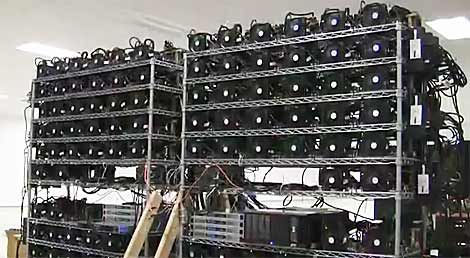
A GPU-powered computer cluster created by students at NCSA, which placed third in the Green 500 competition for energy-efficient supercomputing.
A team of students from the National Center for Supercomputing Applications (NCSA) have earned third place in the Green 500 list for energy efficient supercomputing with a 33 Teraflop system that was competition's greenest self-built cluster. The NCSA entry finished behind a prototype system from IBM and Japan's top supercomputer.
With guidance from Computer Engineering Professor Wen-mei Hwu, Computer Science professor Bill Gropp, and cluster experts at NCSA, students got hands-on experience building their own supercomputer with NVIDIA C2050 graphics-processing units. NVIDIA donated 128 C2050 units to the Illinois CUDA Center of Excellence, led by Hwu, and NVIDIA research scientist Sean Treichler spent time on campus helping to plan and build the cluster, which landed spot 403 on the Top500 list and then took third place when the Green500 was posted
"This project was very unique in that it gave students access to something few people ever have the opportunity to do,"said NCSA's Mike Showerman. "We are already running some physics codes on the system with good performance results."
This video shows the NCSA students assembling the system. It runs just under 2 minutes.
For more coverage of information about supercomputing, check out our High Performance Computing Channel. For additional video, check out our DCK video archive and the Data Center Videos channel on YouTube.




